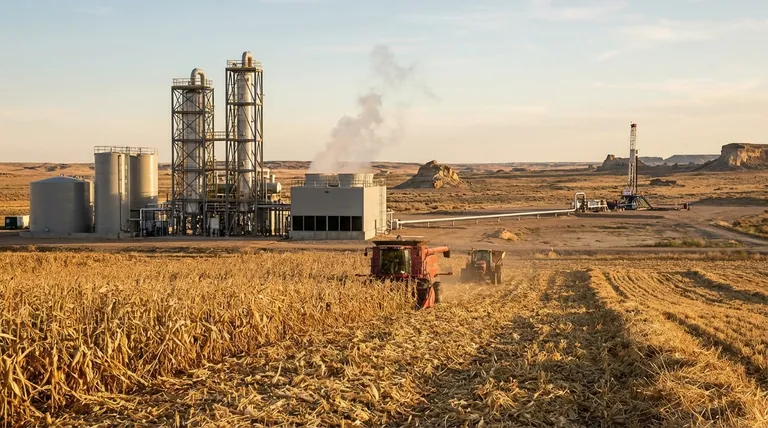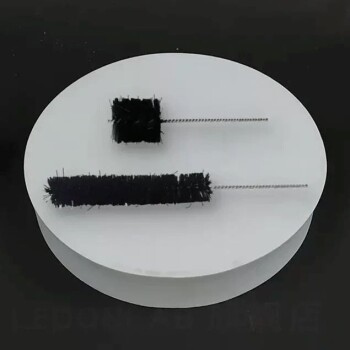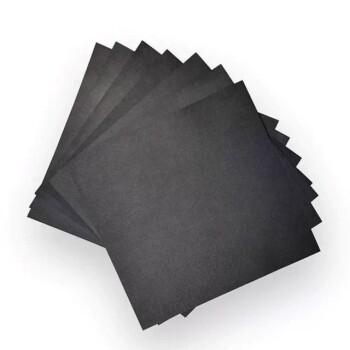In short, bio-oil carbon removal is a method that converts waste plant matter, or biomass, into a stable, carbon-rich liquid called bio-oil. This bio-oil is then permanently stored, typically by injecting it deep underground, to lock its carbon away from the atmosphere for thousands of years.
Bio-oil sequestration is an engineered carbon removal pathway that transforms the unstable carbon in plants and trees into a stable liquid. This approach offers a highly permanent and measurable form of carbon dioxide removal by leveraging waste biomass and established geological storage techniques.

How Bio-Oil Sequestration Works: From Plant to Storage
The entire process is designed to take carbon that was captured from the atmosphere via photosynthesis and lock it into a form that cannot easily escape back into the environment. It involves three primary steps.
Step 1: Sourcing the Biomass
The process begins with biomass, which is any organic material from plants or trees.
Crucially, sustainable bio-oil operations focus on waste biomass. This includes materials like corn stover, wheat straw, forest debris from fire prevention, and sustainably harvested wood that would otherwise decompose and release its carbon.
Using waste prevents competition with food production and avoids the negative climate impacts of clearing land specifically for this purpose.
Step 2: The Pyrolysis Process
The collected biomass is subjected to pyrolysis, the core technology behind bio-oil production.
Pyrolysis is the process of heating the biomass to high temperatures (around 500°C) in a reactor with no oxygen. This thermal decomposition prevents the biomass from burning and instead breaks it down into three things: a liquid bio-oil, a solid biochar, and a flammable syngas.
The bio-oil, a dense, black liquid, contains the majority of the carbon from the original biomass, now in a much more stable and compact form. The syngas is often recycled to power the pyrolysis process itself, reducing the need for external energy.
Step 3: Sequestration and Storage
The final and most critical step is sequestration, or permanent storage.
The carbon-rich bio-oil is transported to an injection site and pumped deep underground into carefully selected geological formations. These are typically depleted oil and gas reservoirs or saline aquifers, located thousands of feet below the surface.
Once there, the immense pressure and impermeable rock layers effectively trap the bio-oil, ensuring its carbon remains locked away from the atmosphere for millennia.
Evaluating the Effectiveness of Bio-Oil CDR
Not all carbon removal methods are equal. Bio-oil sequestration has distinct characteristics regarding its permanence, scalability, and measurability.
Permanence of Storage
Because it relies on geological storage, bio-oil sequestration is considered a highly permanent form of carbon removal. Once the carbon is injected deep underground, the physical and chemical conditions make it exceptionally unlikely to leak back to the surface. The storage timeframe is measured in thousands of years.
Scalability Potential
The theoretical potential is significant. Waste biomass from agriculture and forestry is abundant globally, offering a potential feedstock to produce enough bio-oil to remove billions of tons of CO₂ per year. The main constraint on scaling is not the technology itself, but the logistics of collecting the biomass.
Measurement, Reporting, and Verification (MRV)
Bio-oil offers a key advantage in its high verifiability. It is straightforward to measure the mass and carbon content of the biomass going in, calculate the efficiency of the pyrolysis conversion, and meter the exact volume of bio-oil being injected underground. This creates a clear and auditable record of exactly how much carbon has been removed.
Understanding the Trade-offs and Challenges
While promising, bio-oil sequestration is not without its difficulties. A clear-eyed view of the challenges is necessary to understand its real-world potential.
Biomass Sourcing and Logistics
This is the single greatest hurdle. Biomass is often bulky, wet, and geographically dispersed. The cost and energy required to collect, dry, and transport it to a central pyrolysis facility can be substantial, impacting both the economic viability and the net carbon balance.
Ensuring Sustainability
The claim of carbon negativity hinges on using truly additional and waste biomass. It is critical to ensure that sourcing this material does not deplete soil nutrients, harm biodiversity, or inadvertently cause land-use changes elsewhere that would release carbon. Robust sustainability frameworks are essential.
Net Carbon Footprint
The entire lifecycle must be considered. The net carbon removed is the total carbon stored minus all emissions from the process itself—including transportation of biomass, energy used for pyrolysis (if not fully self-powered), and construction of the facilities. Optimizing this energy balance is key to maximizing climate impact.
Geological Storage Risks
While generally very safe, geological injection carries low-probability risks, such as induced seismicity or potential leaks if a site is poorly chosen or managed. This necessitates rigorous site selection, monitoring, and regulation, similar to the standards used for CO₂ injection in traditional Carbon Capture and Storage (CCS).
Where Bio-Oil Fits in the Carbon Removal Portfolio
Bio-oil sequestration is a powerful tool with specific strengths. Its suitability depends on the primary goal you are trying to achieve.
- If your primary focus is permanence and verifiability: Bio-oil is one of the strongest options available due to its quantifiable process and long-term geological storage.
- If your primary focus is near-term cost reduction: The logistical challenges of the biomass supply chain currently make bio-oil more expensive than nature-based solutions, though costs are expected to fall with scale.
- If your primary focus is creating value from waste: This pathway excels at converting agricultural and forestry residues—often a disposal liability—into a verifiable climate solution.
By transforming plant waste into a stable, storable liquid, bio-oil sequestration provides a durable and measurable pathway for removing carbon from the atmosphere.
Summary Table:
| Key Aspect | Description |
|---|---|
| Process | Pyrolysis of waste biomass (no oxygen) to produce stable bio-oil. |
| Primary Goal | Permanent geological sequestration of atmospheric carbon. |
| Key Strength | High permanence (thousands of years) and strong measurability (MRV). |
| Main Challenge | Logistics and sustainability of biomass sourcing. |
| Ideal For | Organizations seeking durable, verifiable carbon removal credits. |
Ready to explore durable carbon removal solutions for your laboratory or organization?
KINTEK specializes in providing the advanced lab equipment and consumables necessary for researching and developing innovative processes like bio-oil carbon removal. Whether you are analyzing biomass feedstocks, optimizing pyrolysis conditions, or verifying carbon content, our reliable tools can support your R&D efforts.
Contact our experts today to discuss how our solutions can enhance your carbon removal research and contribute to your sustainability goals.
Visual Guide

Related Products
- High Pressure Laboratory Autoclave Reactor for Hydrothermal Synthesis
- Mini SS High Pressure Autoclave Reactor for Laboratory Use
- Conductive Carbon Fiber Brush for Static Removal and Cleaning
- Customizable High Pressure Reactors for Advanced Scientific and Industrial Applications
- Electric Rotary Kiln Small Rotary Furnace Biomass Pyrolysis Plant
People Also Ask
- What reactor is used for high pressure reactions? Select the Right Autoclave for Your Lab
- What are the analytical used in laboratory? Choose the Right Tool for Your Lab's Needs
- Why is platinum unreactive? The Atomic Secrets Behind Its Remarkable Stability
- Does pressure affect melting and boiling? Master Phase Changes with Pressure Control
- What is a high pressure high temperature autoclave reactor? Unlock Extreme Chemical Synthesis

















